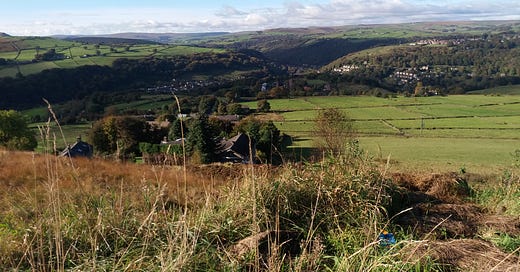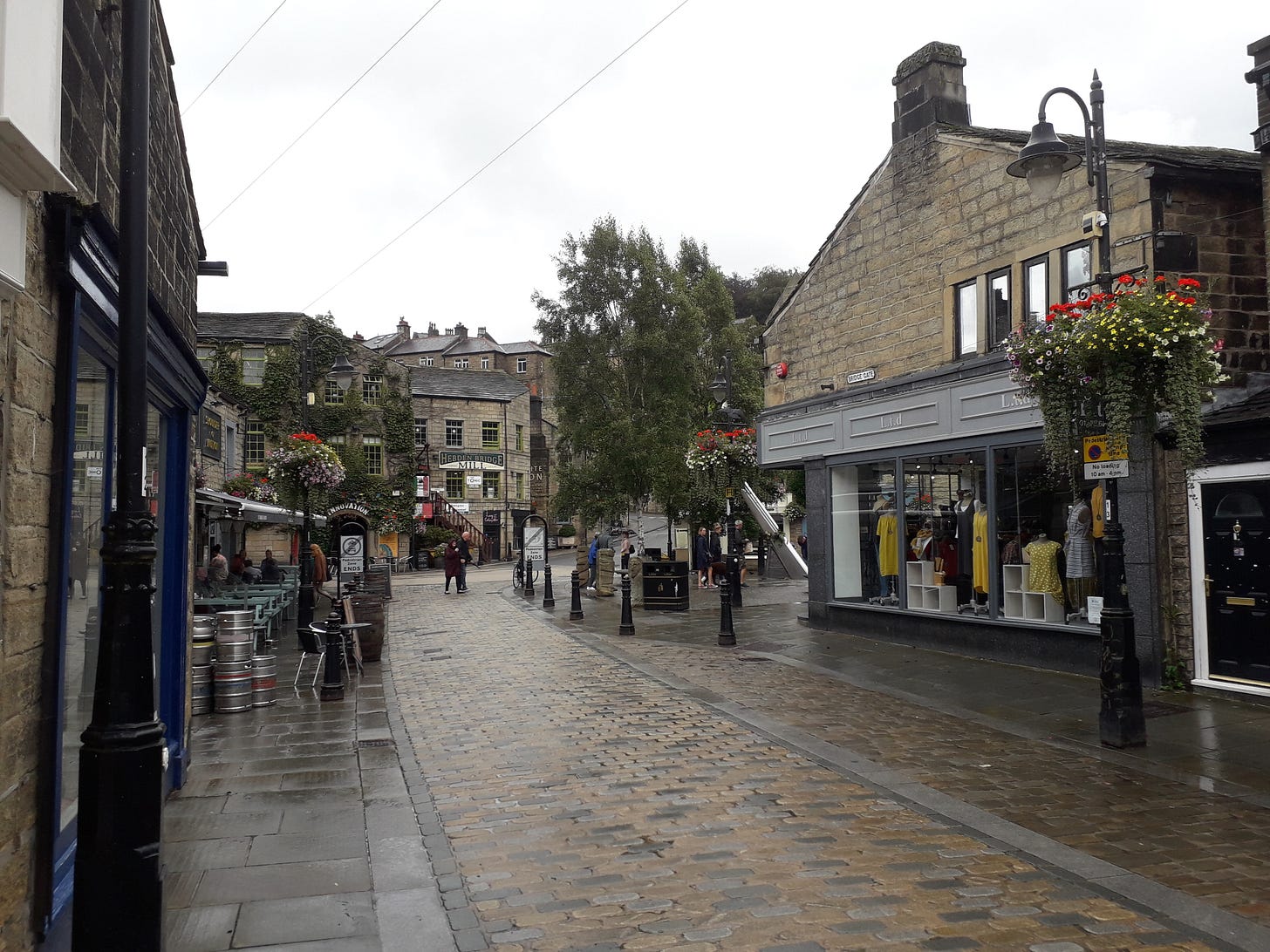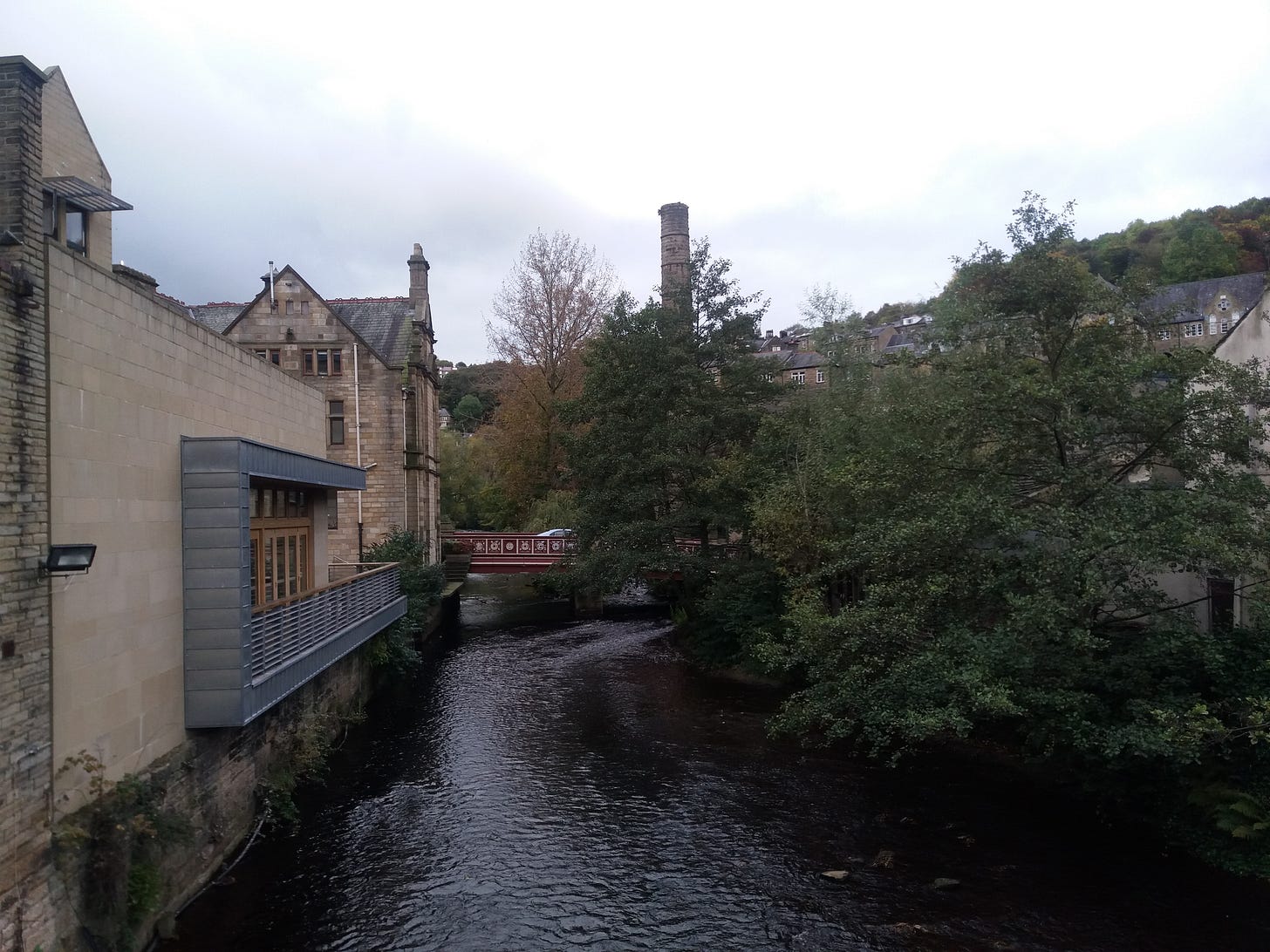Background
●Hebden Bridge is sited at the confluence of the River Calder and two small tributaries, Hebden Water and the River Colden.
●The valleys of these rivers are steep sided and have narrow floors.
●The town lies 15 km west of Halifax. It is one of several former mill towns in the Calder valley. These settlements were originally based on manufacturing cloth from wool provided by local sheep.
●Transport systems have developed from primitive roads (including an old packhorse bridge in the town centre), to a canal (the Rochdale Canal) and a railway line.
●These connected the town to Halifax and Leeds to the east, and Manchester to the west.
●Raw cotton was brought to the town via these new transport routes, and it began to specialise in weaving heavy cotton cloth called fustian, and later corduroy.
●In the early twentieth century the town became branded as ‘Trouser Town’, reflecting this industry.
Photo: Phil Banks
Decline
●After the Second World War, foreign competition took over the market for cheap trousers. The global rise of foreign-made blue denim jeans began to dominate in the 1950s, spelling the end for Hebden Bridge’s corduroy industry.
●People left the area, abandoning homes and mills — some were demolished, others left empty. Shops and small businesses closed.
●Property prices slumped as people moved away.
●The Poet Laureate Ted Hughes, who lived in nearby Mytholmroyd, described Hebden Bridge in his poem ‘Stubbing Wharfe’ as ‘this gloomy memorial of a valley’ and ‘a gruesome dead-end tunnel’.
● Some developers wanted to demolish much of the outdated housing and also encouraged an upgrade of the road (A646) through the town.
Rebirth
●During the 1970s the empty derelict houses in the town attracted some squatters and bohemians (hippies) who brought a range of interesting and creative ideas including writing, poetry, painting and music. In some areas they took over entire streets, saving them from demolition.
●An arts-based culture developed in the town, and a general air of tolerance grew (see next slide).
●New initiatives took place: the canal was restored and re-opened, the town became a tourist hotspot (also assisted by the popularity of the Hardcastle Crags estate to the north), and a number (currently over 500) of small independent creative businesses were established.
● Other features include: an arts festival, a council-owned cinema, being designated a ‘Fairtrade town’, and becoming a ‘Walkers are welcome‘ town.
● The town provides the setting for the BBC drama Happy Valley, although other scenes are shot in Halifax, Huddersfield and nearby villages.
Tolerance
●Hebden Bridge has become known as ‘the lesbian capital of the UK’.
●There is a large number of gay and lesbian businesses — from dog walkers, decorators and fashion stores to wine bars and hotels.
●Many businesses display the rainbow flag of the LGBT community, and some make their orientation known by their names, such as the home furnishing shop, ‘Home…Oh!’
●The town centre (around Bridge Gate) has a medley of organic, locally sourced and vegetarian eateries, independent coffee houses, eco-friendly clothing and knick-knack shops, arts and culture venues and only a handful of high street names.
● Some people see it as Yorkshire’s San Francisco.
Photo: David Redfern
Issues
●There is a shortage of parking spaces owing to the lack of space caused by the narrow valley floor location. It has been suggested that unless parking capacity rises dramatically, the tourist-based economy may collapse.
●The town has high levels of air pollution from slow-moving traffic passing through the centre.
●It is vulnerable to flooding. On 26 December 2015, the highest ever river level at over 3.3 m was recorded, 0.3 m higher than the previous maximum. Many houses and businesses were impacted.
●Property prices have been driven up by in-migration of commuters who work in towns and cities such as Halifax, Manchester and Leeds. The last two are only 35 minutes away by train.
The future
●The appeal of the town to its range of different residents is the strength of its ‘community spirit’.
●Walking around the town’s attractive and lively streets, the friendliness of the place is clear.
●Most people, and particularly women, feel safe and included.
●Hebden Bridge is an example of a place where the outcomes of regeneration and gentrification are overwhelmingly positive.
●But….. there is a definite feeling that many new arrivals to the town are more wealthy, better educated and more ‘normal’. Could it be that Hebden Bridge’s success is moving it away from the ideals of the people who transformed it?






